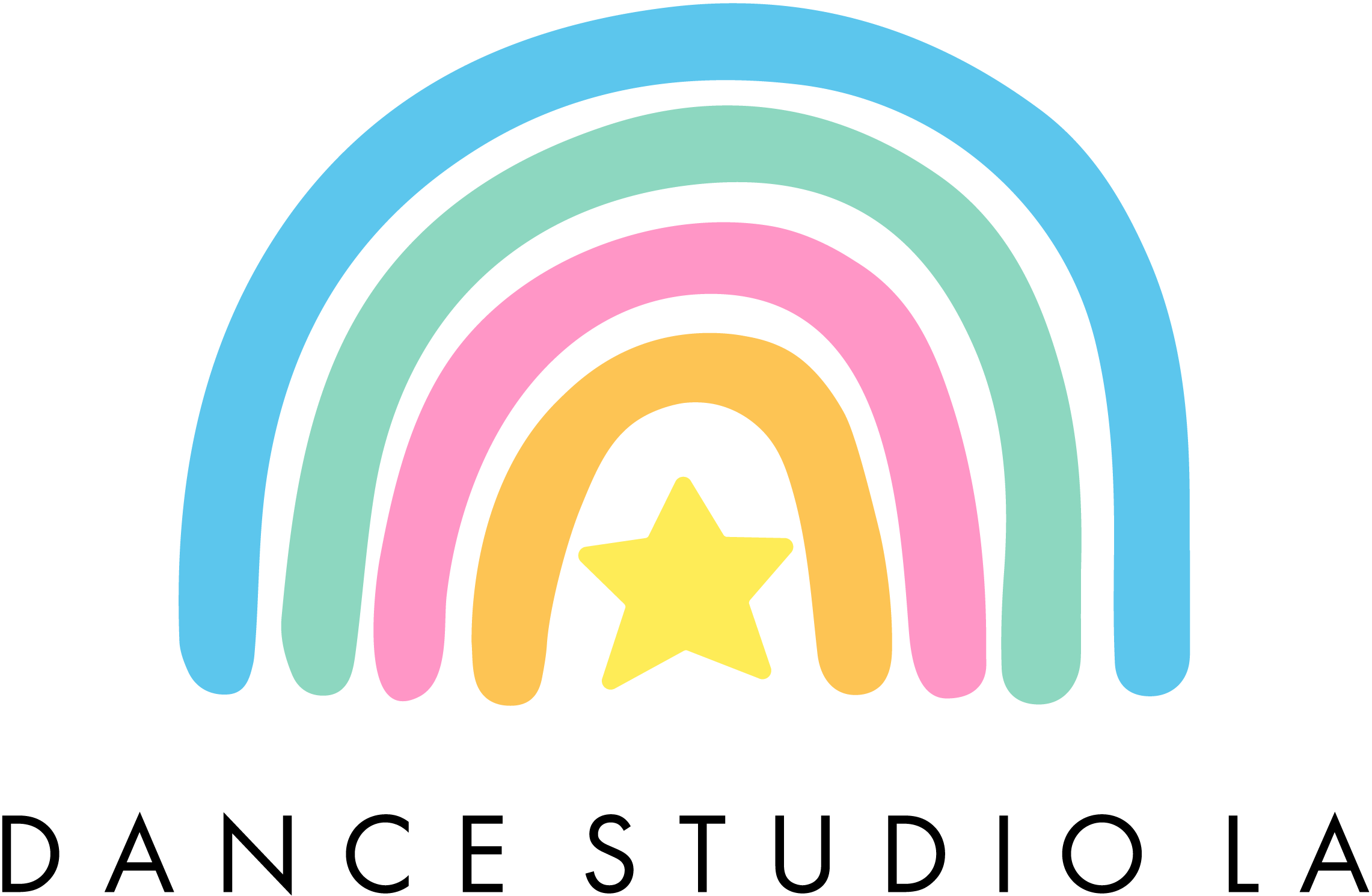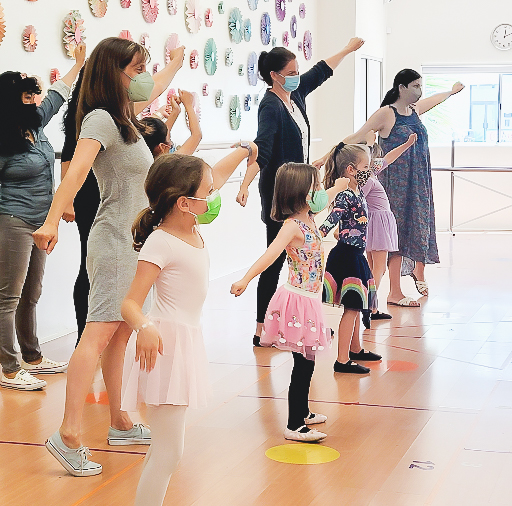Tense + Release Exercise – Have your students lie flat on their backs and close their eyes. Encourage them to notice their breath, bringing awareness to their present senses. Working up from the toes to the face muscles, guide your dancers through gently tightening different muscle groups for 5 seconds at a time and then slowly releasing after. Your dancers should feel more relaxed, centered, and prepared to take on whatever you have planned for class!
Belly Breathing– Among many benefits, breath-work has been proven to assist in regulating the nervous system, decreasing stress, and resetting one’s mental state. Our favorite way to incorporate it into class is by imagining our bellies as balloons. Have your dancers stand or sit in a comfortable position and close their eyes. Encourage them to sit tall and elongate their spine. Then have them imagine their bellies as a big balloons they’re slowly filling up with air. When their balloon is full, have them hold it for a moment, then slowly release and let the air all the way out.
Five Senses Safari– This is a fun one, especially for your younger classes! It activates the imagination and encourages awareness. When you feel like your class needs a reset, take them on a 1 minute safari. Set your timer and ask them connect with each of their senses. If you’re going to go on safari, you need to keep your awareness and stay present in the moment. As they silently walk around the room with you, set a calming scene for them to explore, being specific about the imaginary environment’s details. What are you seeing? What are you hearing? Do you smell anything? Can you feel anything? What snack did you pack for safari and how good does it taste? Because before you know it, the timer will be up and it’ll be time to head back to class with all the mindful tools we picked up from our adventure.
Pro-tip: We recommend setting extra time for yourself to transition out of your scene and get dancers back to class mode.





